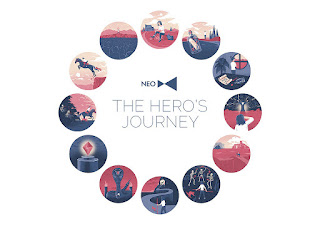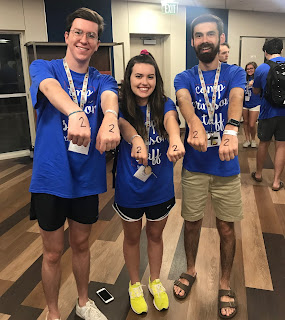Story Lab : Crash Course
Crash Course Mythology
Crash Course 1
Overall, through these videos I learned that my storybook should roughly follow the Hero's journey, and make sure there's plenty of trials and tribulations my characters go through. I also learned that my stories must have some sort of significance in order to be remembered, so I will try hard to make my stories memorable.
Crash Course 1
- Most myths are very old and have multiple different versions, so no story is really "wrong"
- Each myth can be interpreted differently, so everyone understands it differently so nothing is a fact or truth, they're all stories.
- Myths have been written about since the 6th century BC
- Myth comes from the greek word mythos, which means story
- Myths must have significance and staying power, which is how they survive centuries and are passed down. they need to be relevant and interesting.
- There is a difference between folklore and myths
- The story of Persephone explains why we have the different seasons, many myths explain origins of worldly events
Crash Course 12
- Mythology is the systematic study of myths, and myths are studied by
- Some people, including Plato, regarded myths as just lying
- Euhemerism is interpreting myths as primitive explanations of the natural world or as time distorted accounts of long past historical events
- Mythology didn't really kick off until the 18th centuries
- Johann Gottfried Herder believed that their myths embodied the simplicity and purity of germans
- Anthropologists read about myths and conducted field work to study how myths worked in society
- Freud and Jung say the source of myths is the human unconscious, and that myths are just projections of our thoughts and feelings
Crash Course 25
- Joseph Campbell created the Hero's Journey, and looked at the identical steps nearly every hero takes in a myth and labeled them all
- Human beings want to find connection and wisdom in the universe, and hero stories help us find our places
- There are 3 parts and 17 subparts of the Hero's Journey, and not all stories have all 17 parts
- Part one is the hero starting her quest and separating herself from her people. They may receive a call, then refuse it, then reluctantly accept it.
- Next, the hero crosses the threshold by defeating some evil and goes through multiple trials and challenges. They must demonstrate their worthiness.
- The hero meets a goddess or temptress next, then a father figure confrontation.
- At the very end, the hero ends up where they started with a happily ever after.
 |
| The Hero's Journey, Flickr |



Comments
Post a Comment